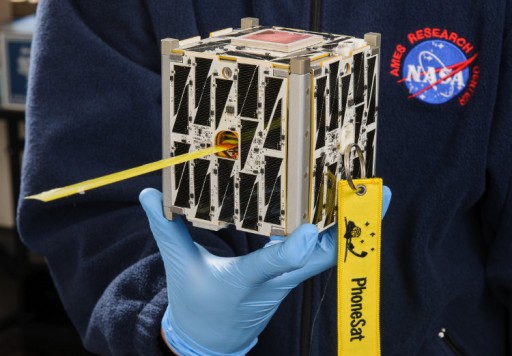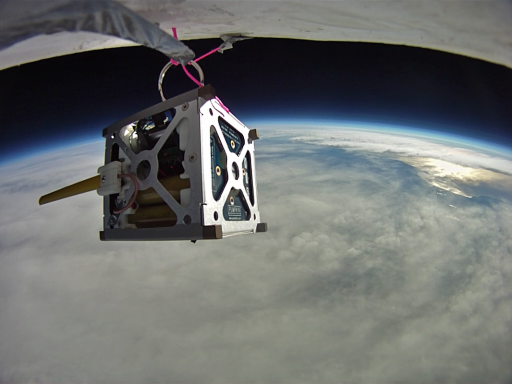PhoneSat 2.5

PhoneSat 2.5 is the next in a series of PhoneSats operated by NASA’s Ames Research Center as part of technical demonstrations using a smartphone to perform the functions of a spacecraft bus. Two PhoneSat 1 satellites were launched with the A-One Antares Demonstration Flight in April 2013 along with a prototype of the PhoneSat-2 satellite that featured a number of upgrades including the use of solar panels for power generation, a two-way radio link and upgraded avionics (The PhoneSat-1 satellites only used batteries because they had a very short orbital life time.) PhoneSat 2.4 launched in November 2013 and has operated for more than four months in orbit, but its smartphone has shown radiation-related degradation and can no longer execute its flight software.
The PhoneSats feature smartphones running the Android operating system and build the centerpiece of the 1-unit Cubesats. The main purpose of the phones is to control all critical functions of the satellite, determine its attitude with the phone’s sensors, store data, provide acceleration data and take images of Earth with the 5-Megapixel camera of the phone. PhoneSat 2 is built around the Samsung Nexus S phone. It is equipped with power-generating solar cells. The spacecraft features a two-way S-band radio, allowing commanding from Earth. A GPS receiver provides position data and reaction wheels are used for active attitude control with orientation data being provided by the phone.

PhoneSat 2.5 sets out to complete a more ambitious mission than the previous PhoneSats. The satellite will continue to provide further confidence in the PhoneSat concept and components by investigating its ability to survive long-term in the radiation environment of space. Also, the satellite will continue the technical demonstration of using smartphone technology to complete attitude control, data handling, and communication.
In addition, PhoneSat 2.5 will test a space-based communications system supported by the smartphone for potential future application. The satellite is equipped with a higher-gain S-Band antenna that will serve as a pathfinder for future missions such as the Edison Demonstration of Smallsat Networks (EDSN) planned to launch in 2014.
EDSN will use the PhoneSat architecture and deploy eight identical satellites in a loose formation to demonstrate cross-link communications in between the satellites to allow engineers to study the application of small satellites in space-to-ground and space-to-space communications.
As an upgrade to previous PhoneSats, the 2.5 CubeSat uses an active attitude determination and control system utilizing reaction wheels to provide three-axis control and precise pointing capability. This will serve as a demonstration to determine whether small satellites could be used to carry scientific instruments that require precise pointing to fulfill their function.
With an orbital life time of about six weeks, PhoneSat 2.5 will further study the capabilities of the satellite design in the harsh radiation environment on Low Earth Orbit.
“NASA is using these pioneering small spacecraft missions to gauge the use of consumer-grade smartphone technology as the main control electronics of a capable, yet very low-cost, satellite,” said Andrew Petro, program executive for the Small Spacecraft Technology Program in the Space Technology Mission Directorate at NASA Headquarters.
